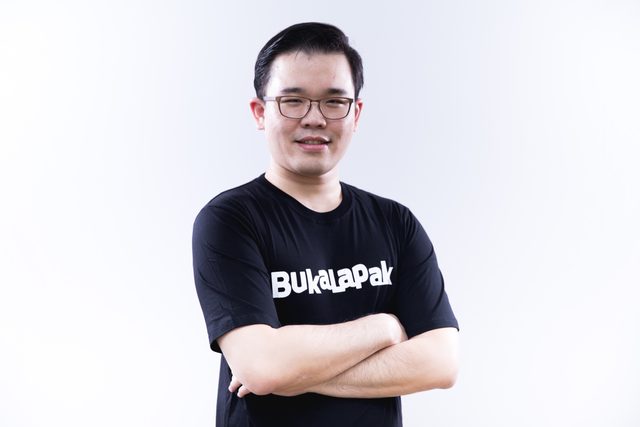Partner content in association with
How Mitra Bukalapak helped Indonesia’s warungs move to a 21st century business model
Warung, Photo: Bukalapak website
While digitalising the business models of the traditional mom and pop stores in Indonesia, Mitra Bukalapak invented one of the country’s hottest verticals within fintech – warung-tech
As recently as a decade ago, it was business as usual for Indonesia’s warungs – mom and pop stores that dot the archipelago. These shops worked on a business model that was fundamentally unchanged for over half a century.
The first glimmers of change could be seen in 2016, with what started as a conversation between a team member at Bukalapak and an offline merchant. After a series of successful initial iterations, the opportunity was deemed too big to ignore. Eventually Mitra Bukalapak was formally launched and has played a pivotal role in bringing warungs into Indonesia’s digital economy.
Speaking about the origins of Mitra Bukalapak, Howard Gani, CEO of Buka Mitra Indonesia said, “It started as a pilot to address the pain points of offline retailers. We wanted to bring positive, sustainable value to all players in the chain rather than create disruption for its own sake.” Starting with just a couple of categories, Mitra Bukalapak is now a part of multiple supply chains and helps warungs offer a vast assortment of products and services.
The Mitra model marked a significant shift for Bukalapak which had previously focused exclusively on e-commerce. Mitra Bukalapak has emerged as a moat for the parent company. In a country where e-commerce companies invariably gravitated towards urban enclaves, over 70% of Mitra Bukalapak’s orders come from the significantly larger non-tier 1 markets which represent a much bigger opportunity. Per a survey from Nielsen, Mitra Bukalapak has cornered a leading share among online-to-offline platforms in Indonesia, with 42% of warungs using its app.
The size of the opportunity remains hard to pin down but what is obvious is the transformative impact of digitalisation on warungs. The chance to play an active role in this transformation was among the reasons that drew Gani to Bukalapak, from Bain & Co. While Bain and INSEAD left him with insights on how to manage businesses, Bukalapak satisfied his urge to execute, deliver and see results firsthand. Gani said, “I didn’t want to analyse a roller coaster from a distance, but to actually go through the ups and downs.”
The birth of ‘warung-tech’
At the time Gani joined in 2018, Mitra Bukalapak was working on its mid to long-term vision. The overarching objective was to give a Mitra (partner – in this case, the warung owner), the same access and information as a modern retailer. The team quickly realised Mitra Bukalapak could not be treated as an extension of e-commerce. Gani said, “It’s an end-to-end journey and lifecycle: acquiring Mitras, introducing them to the features of the app, ensuring awareness, and eventually making them conscious of the value we offer.” Mitra Bukalapak aimed to move the goalposts from a promo-driven short-term approach. The focus shifted to improving sales and helping warung-owners earn a better living.

The lack of tech-savvy among the Mitras made this particularly challenging. Many of them had never used or even seen an app before. And so, Mitra Bukalapak created an exclusive community called Juwara which connects warung owners. The forum has grown to be a venue for candid discussion on the app, the sharing of tips and tricks, as well as a feedback mechanism to discuss problems. A filtering process ensures the team at Mitra Bukalapak can zero in on issues that need active intervention.
Its success is reflected in the massive influx of warungs, particularly through the pandemic. Gani said, “Our partners were challenged when it came to retaining offline traffic. Warung owners were also reluctant to head out to shop for restocks.” Mitra Bukalapak unleashed a suite of products including direct delivery to warung owners. They were educated on selling and marketing better, and in the use of elementary SaaS tools to connect with consumers via social media. Gani attributed customer loyalty to “Solutions that work.” He added, “That is how we are able to retain a significant proportion of market share in major industries.”
Mitras are of course only part of the equation. Mitra Bukalapak has engaged with brand owners to introduce new products and engage better with warungs. Gani said, “We help tailor the message so Mitras do not get confused. We run campaigns and programmes with a number of brands but are hoping to work more closely with them. We’ve already built quite a good track record.”
Taking on competition
The massive growth in the space has drawn in fierce competition, a clear sign of a healthy market. In the fray are well financed rivals with an e-commerce background, as well as a host of specialist firms offering a suite of warung-tech solutions.
However, where Mitra Bukalapak has an edge is the benefits on offer. Gani said, “When they join, the assortment they can offer to customers multiplies immediately – especially virtual and financial products. On registering, a store can instantly access 42 odd products that can be offered to its next customer.”
Being part of Mitra Bukalapak gives these stores bookkeeping and CRM tools that boost efficiency. Gani said, “It helps retain offline customers and gain new ones. The Mitras have been able to improve their revenue by multiples when they join versus when they rely on a conventional supply chain.”
Mitra Bukalapak actively monitors the competition and the innovations that they bring. But Gani was clear that some of the newcomers had more of a short-term focus.
The road ahead for the Mitra model
Mitra Bukalapak considers the next five years a horizon for some of its long term goals. What keeps the team motivated is the impact it has made on the lives of warung owners. Some have been lifted out of poverty and are able to educate their children.
Mitra Bukalapak intends to go further beyond tier 1 towns; and wider in terms of addressing other verticals that have yet to be impacted by digitalisation. Gani said, “The non-tier 1 cities have not been properly made aware of the solutions we offer. Down the line — whether it takes three years or five — they will be more digitally savvy in understanding what is available and how it helps.” With a lot of the ground work already complete, Mitra Bukalapak has positioned itself to be a large beneficiary once this happens.
The above article was created in partnership with Bukalapak. To get a ringside view of what the future holds for digitalisation of traditional retail in Indonesia, sign up for the launch of warung-tech index

